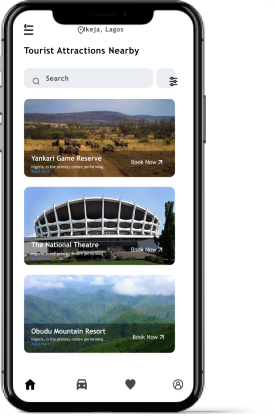What We Provide In Tourism App
In an era characterized by wanderlust and a thirst for adventure, technology has become an indispensable companion for travelers. Tourism apps have transformed the way we explore new destinations, plan our journeys, and make the most of our adventures. This comprehensive guide will be your passport to the world of tourism apps. We will embark on a journey through their benefits, explore the essential features that make them indispensable, discover the major players in the industry, and unveil the secrets to developing a successful tourism app. Additionally, we will delve into the technologies, time frames, and costs involved in creating your very own tourism app. So, let’s pack our digital bags and set off on an adventure to explore how tourism apps are reshaping the way we experience the world.

Benefits of Tourism Apps
Tourism apps have redefined the travel experience, offering a plethora of advantages to both seasoned globetrotters and novice adventurers:
- Comprehensive Information: Tourism apps provide access to a wealth of information about destinations, including attractions, accommodations, dining options, and more.
- Real-Time Updates: Users can receive real-time updates on weather, traffic, and local events, ensuring they make informed travel decisions.
- Customized Itineraries: Many apps allow users to create personalized travel itineraries based on their interests and preferences.
- Interactive Maps: GPS-enabled maps help travelers navigate unfamiliar terrain with ease, reducing the risk of getting lost.
- Reviews and Recommendations: User reviews and recommendations offer valuable insights into the best places to visit, eat, and stay.
- Language Assistance: Translation features and language guides bridge the communication gap in foreign countries.
- Offline Access: Some apps offer offline access to essential information, ensuring travelers stay connected even without a data connection.
Key Features for a Successful Tourism App Development
Creating a successful tourism app requires careful consideration of key features that enhance user experience and encourage exploration:
- Comprehensive Destination Guides: Detailed information about attractions, landmarks, and cultural experiences.
- Interactive Maps: GPS-enabled maps with navigation, location pins, and route planning.
- Itinerary Planner: A tool for users to create, customize, and manage travel itineraries.
- Booking Integration: Seamless integration with booking platforms for flights, accommodations, tours, and activities.
- Reviews and Recommendations: User-generated reviews, ratings, and recommendations for local businesses.
- Weather Updates: Real-time weather forecasts and climate information for the destination.
- Language Assistance: Translation tools, phrasebooks, and language guides to assist travelers in foreign countries.
- Offline Access: The ability to download maps, guides, and essential information for offline use.
- Local Events: Updates on local festivals, concerts, and events happening during the traveler’s stay.


Features of Tourism Apps
Tourism apps come equipped with an array of features that enrich the travel experience. Let’s explore these essential functionalities:
- Destination Information: Detailed information about destinations, including points of interest, historical sites, and local culture.
- Interactive Maps: GPS-based maps that provide directions, nearby attractions, and the user’s current location.
- Itinerary Planner: Tools for creating and managing travel itineraries, complete with attraction recommendations and scheduling.
- Booking Services: Integration with booking platforms for flights, accommodations, tours, and activities.
- Weather Updates: Real-time weather forecasts and climate information for the destination.
- Reviews and Ratings: User-generated reviews and ratings for accommodations, restaurants, and attractions.
- Language Assistance: Translation tools, phrasebooks, and language learning resources.
- Offline Access: The option to download maps, guides, and other information for offline use.
- Local Events: Updates on local festivals, concerts, and events happening during the traveler’s stay.
Technologies, Time Frame, and Cost
Developing a tourism app involves several factors, including the choice of technologies, time frame, and costs:
- Technologies: Depending on the platform (iOS, Android, or both), technologies like Swift, Kotlin, React Native, or Flutter may be used. Backend technologies like Node.js, Ruby on Rails, or Django can be chosen.
- Development Time Frame: A basic tourism app can take approximately 4-6 months, while a more complex app with additional features may require 9-12 months or longer.
- Cost Range: Costs can vary widely. Basic apps may start at $20,000 – $50,000, medium complexity apps ranging from $50,000 – $100,000, and complex apps exceeding $100,000 in development costs.
